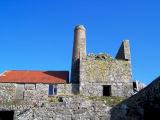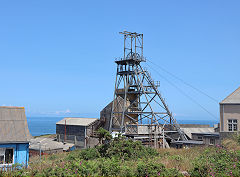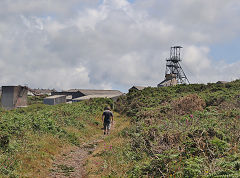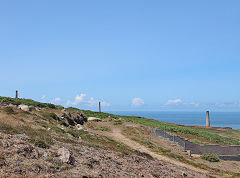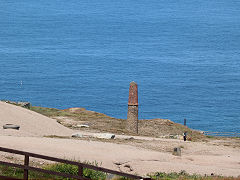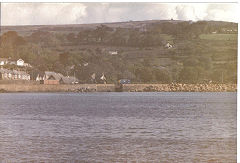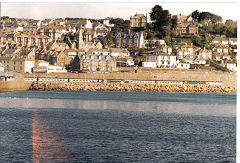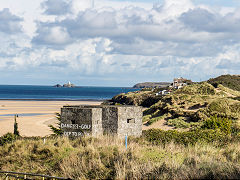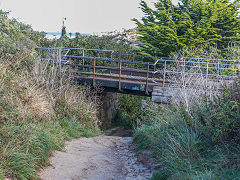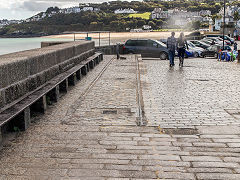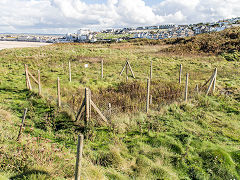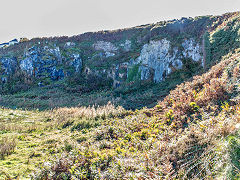The Transport and Industries of South-Western England
Click on the button to go to :-
Click on the thumbnail to enlarge a photo or map and read more about it.
Then click 'Full Size' on the toolbar to see it in all its glory.
Padstow, Bodmin, Newquay and Perranporth
Beacon Hill Mine - SW 9691 6215
Variously known as Beacon Hill Mine, Belovely or Belowda Beacon was chiefly a tin mine working Wheal Dora Lode and Webb's Lode. The enterprise was quite short-lived and was only in operation for 30 years - 1872 to 1902, during this time it produced 49 tons of tin. There were attempts at reopening the mine in 1909, 1921 and 1935 but these came to nothing.
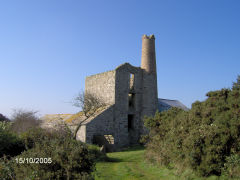
Beacon Hill Mine, Belowda
|
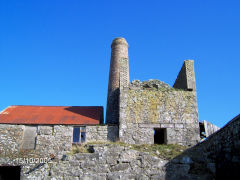
Beacon Hill Mine, Belowda
|
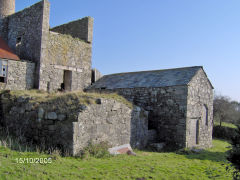
Beacon Hill Mine, Belowda
|
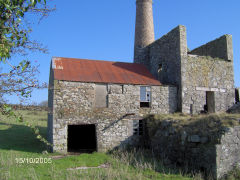
Beacon Hill Mine, Belowda
|
The Bodmin and Wenford Railway and Wenfordbridge branch - SX 0415 6740
Well, the day started quite pleasantly while I watched 4612 arrive, run round it's train and head off again at Boscarne Junction, ahhh, memories. So then I set off up the Wenfordbridge branch and then it started to pour down with rain. But I did get to Wenfordbridge and back again.
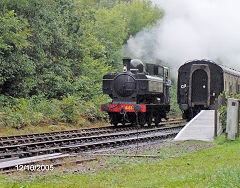
Boscarne Junction and 4612
|
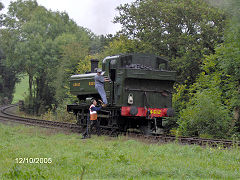
Boscarne Junction and 4612
|
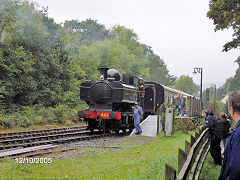
Boscarne Junction and 4612
|
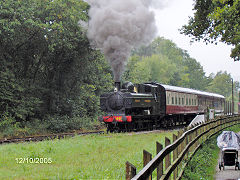
Boscarne Junction and 4612
|

Boscarne Junction and 4612
|
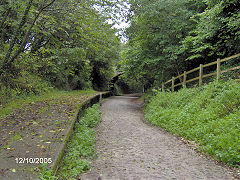
Dunmere Station
|
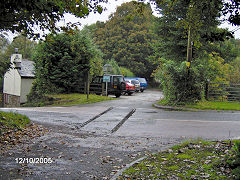
Dunmere level crossing
|
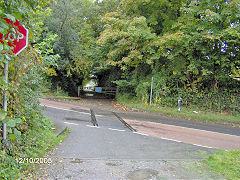
Dunmere level crossing
|
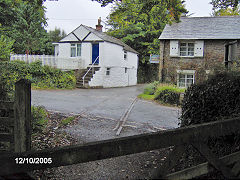
Hellandbridge level crossing
|
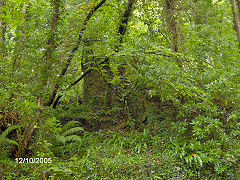
Quarry in Shell Woods
|

Wenfordbridge branch trackbed
|
|
Delabole Quarry - SX 0755 8420
The biggest hole in the world (at one time!)
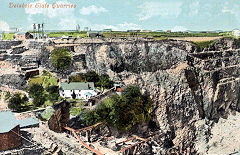
Delabole Quarry
|
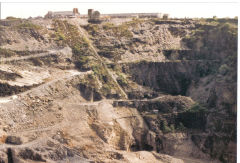
Delabole Quarry, 1986
|
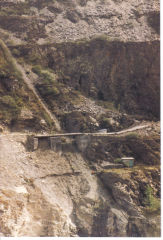
Delabole Quarry, 1986
|
Padstow
The cast iron water tank at Padstow gun battery is embossed with "Douglass Bros Ld, Blaydon-on-Tyne, C & M 1888". The Stepper Point Quarry had a tramway running from the quarry to the building in the photo, a crusher or transfer point.
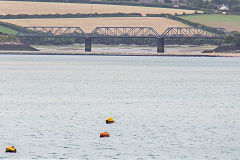
Pinkson Creek bridge, Padstow
|
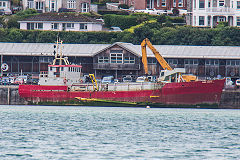
'Sand Snipe' at Padstow
|
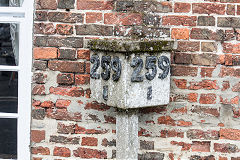
Padstow, 259 Miles from Waterloo?
|
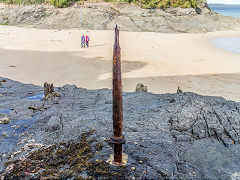
Padstow old lifeboat station
|
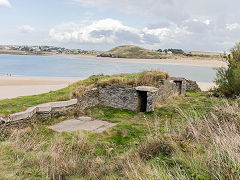
Padstow gun battery
|
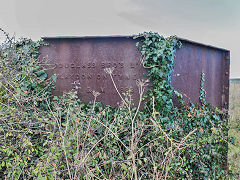
Padstow gun battery water tank
|
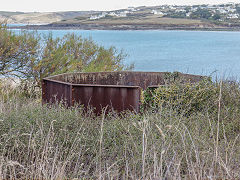
Padstow gun battery water tank
|
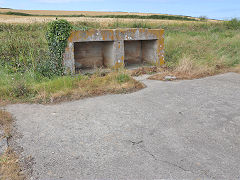
Padstow searchlight battery
|
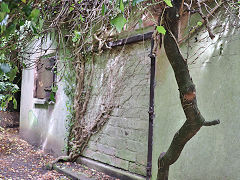
Padstow generator house
|
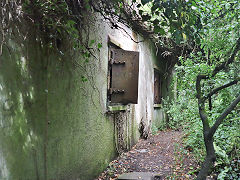
Padstow generator house
|
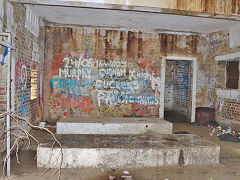
Padstow generator house
|
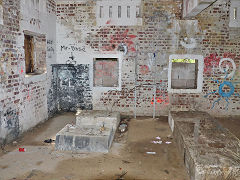
Padstow generator house
|
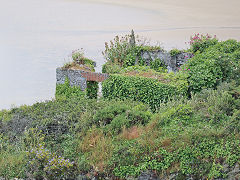
Stepper Point Quarry building
|
|
|

Wadebridge Station and 31856
|
Trevose Head - SW 8505 7630
Trebetherick Point - SW 9250 7795
with quarries and shipwrecks
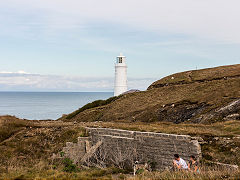
Trevose Head quarry loading dock
|
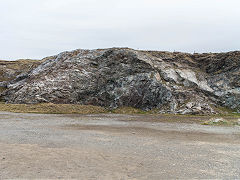
Trevose Head quarry
|
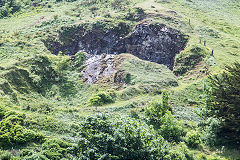
Trebetherick quarry
|

Shipwreck on Trebetherick Point
|
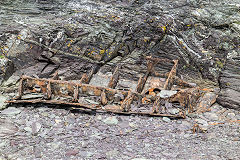
Shipwreck on Trebetherick Point
|
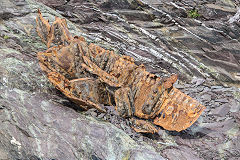
Shipwreck on Trebetherick Point
|
Newquay Canal - SW 8393 6273
Newquay town - SW 8115 6190
The Newquay end of the St Colomb Canal started at the top of Lusty Glaze incline, SW 8242 6255, and reached St Colomb Minor where the course can be traced along the hillside.
Newquay Harbour railway is now a footpath and the caves below have doors leading up to the hotels above.
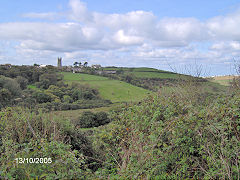
Newquay canal, St Columb Minor
|
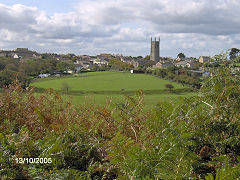
Newquay canal, St Columb Minor
|
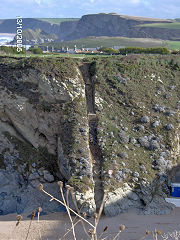
Newquay canal incline, Lusty Glaze
|
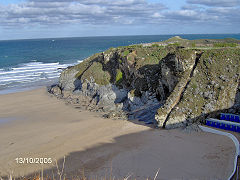
Newquay canal incline, Lusty Glaze
|
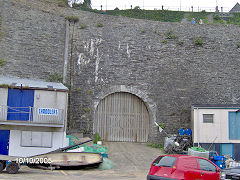
Newquay harbour tunnel
|
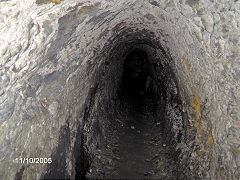
Newquay caves
|
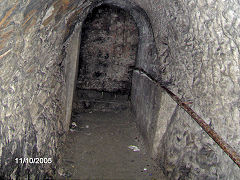
Newquay caves
|
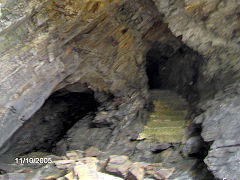
Newquay caves
|
Treamble, near Perranporth - SW 7845 5610
Unusually for Cornwall, Treamble was an iron and Fullers Earth mine, with its own branchline from the Perranporth to Newquay Railway. It was mainly active between 1920 and 1940.
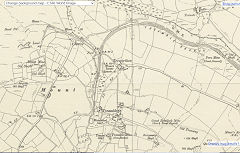
Treamble mines in 1905
|
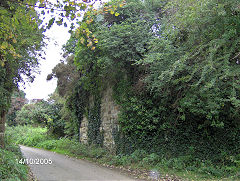
Treamble branchline bridge
|
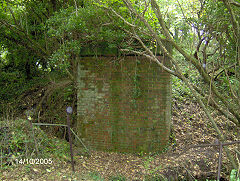
Treamble mine tramway bridge
|
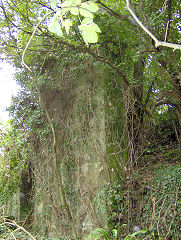
Treamble mine tramway bridge
|

Treamble mine building
|
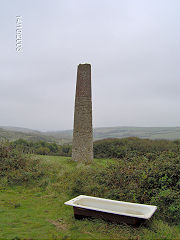
Treamble mine chimney
|
Par, St Austell and Fowey
The Luxulyan Valley and Treffrys Tramway
Joseph Treffry (1782 - 1850) was an industrialist with many interests in Mining, quarrying and china clay. He built the leat and tramway down the valley to the Fowey Consols Mine and the port of Par. Both the tramway and leat crossed the Par river valley on a unique 10-arched stone viaduct, the leat running beneath the tramway.
North of Treffry's Viaduct - SX 0540 5740
From Treffry's Viaduct the leat and tramway ran Northwards towards Luxulyan where the tramway was superseded by the Newquay railway. The original tramway ended at Molinnis.
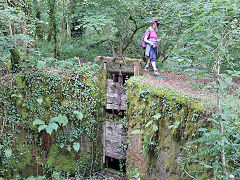
Carmears tramway north of the viaduct
|
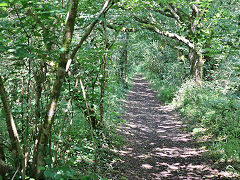
Carmears tramway north of the viaduct
|
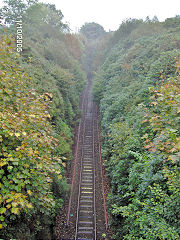
Luxulyan village, Newquay branch
|
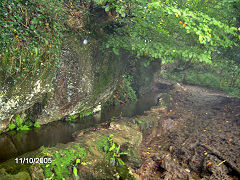
Leat North of Treffrys Viaduct
|
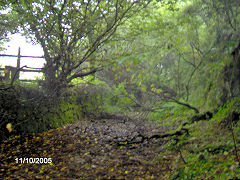
Tramway North of Treffrys Viaduct
|
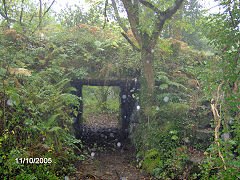
Tramway North of Treffrys Viaduct
|
Colcerrow Quarry - SX 0645 5780
Colcerrow Quarry and Carbeans Quarry were at the end of a tramway branch from the South of Treffrys Viaduct. The Colcerrow line was the last part of the tramway to be used, traffic was worked from the quarry to Luxulyan, reversing at the viaduct, at least until the 1930s with a short stub in use until 1959.

Colcerrow Quarry tramway
|
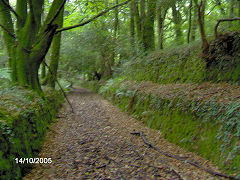
Colcerrow quarry tramway
|
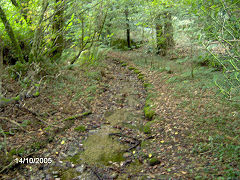
Colcerrow quarry tramway
|
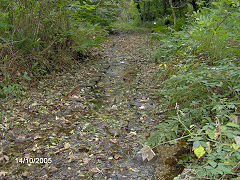
Colcerrow quarry tramway
|

Colcerrow quarry tramway
|

Remains of crane, Colcerrow Quarry
|
Treffry's Viaduct - SX 0561 5721
Treffry's Viaduct carried the leat and tramway over the Par valley on a stone-built ten arch structure. The viaduct was probably uniqur in carrying both tramway and leat over the valley. It was built between 1839 and 1842 and designed and constructed by Treffry's steward, William Pease.
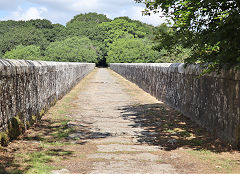
Treffry's Viaduct
|
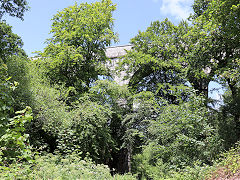
Treffry's Viaduct
|
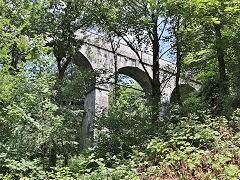
Treffry's Viaduct
|
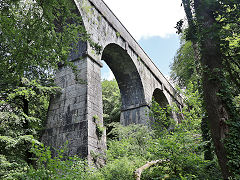
Treffry's Viaduct
|
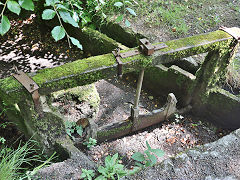
Treffry's Viaduct sluice gate
|
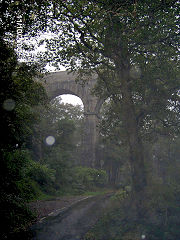
Treffrys Viaduct in a downpour
|
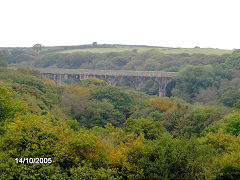
Treffrys Viaduct in a downpour
|
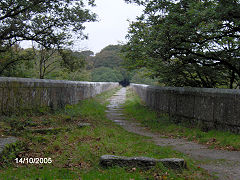
Treffrys Viaduct in a downpour
|
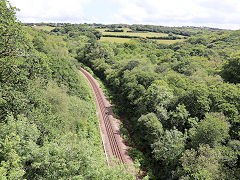
Treffry's Viaduct, Newquay branch
|
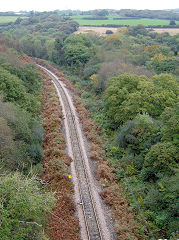
Newquay branch looking North
|
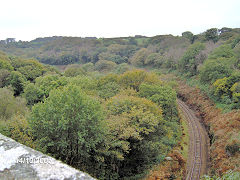
Newquay branch looking South
|
|
Carmears Tramway - SX 0631 5691
From Treffries Viaduct to Ponts Mill
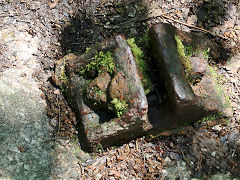
Carmears tramway chair
|
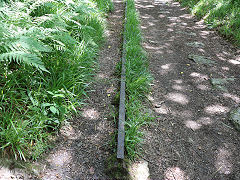
Carmears tramway rail
|
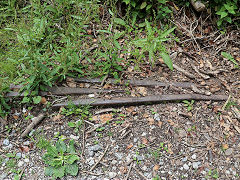
Carmears tramway rail
|

'K', the Kendall boundary stone
|
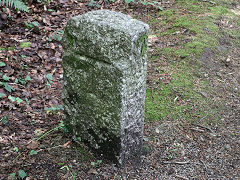
'T', the Treffrey boundary stone
|
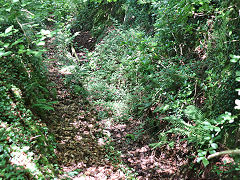
Carmears leat beside tramway
|

Carmears leat beside tramway
|
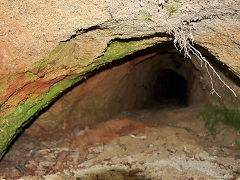
Carmears leat beside tramway
|
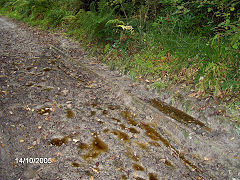
Tramway South of Treffrys Viaduct
|
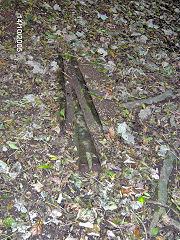
Tramway South of Treffrys Viaduct
|
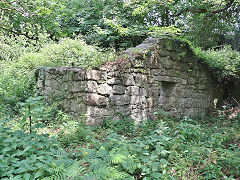
Carmears incline smithy
|
|
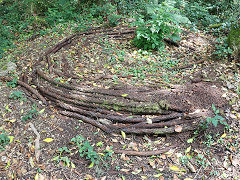
Carmears incline cable
|
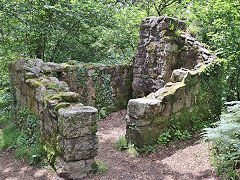
Carmears incline checkers hut
|
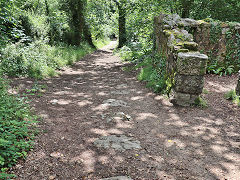
Carmears incline
|
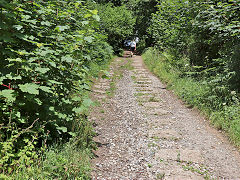
Carmears incline
|

Carmears incline
|
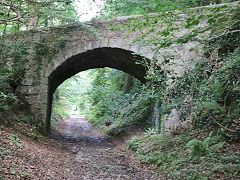
Carmears incline
|
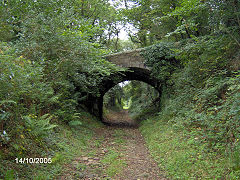
Carmears incline bridge, Luxulyan
|
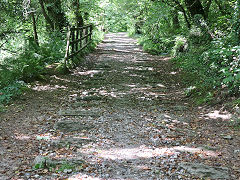
Carmears incline
|
Carmears Waterwheel - SX 0656 5667
The Carmears Waterwheel was buit in 1841and used firstly for incline haulage and later to power a clay crushing mill. Originally an 34ft wheel, a 40ft wheel was installed in the 1890s when it powered china stone grinding pans. The mill closed in 1908 and the wheel was broken up in 1940
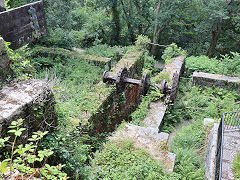
Carmears Waterwheel
|
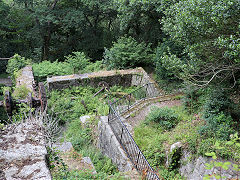
Carmears Waterwheel
|
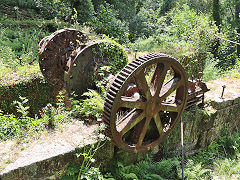
Carmears Waterwheel
|
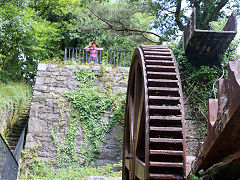
Carmears Waterwheel
|
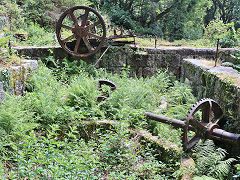
Carmears Waterwheel
|
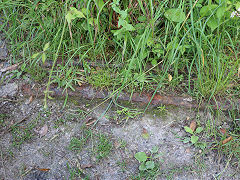
Carmears Waterwheel
|
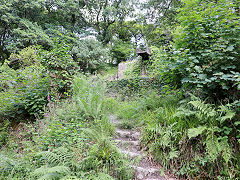
Carmears Waterwheel
|
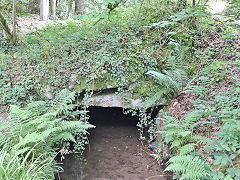
Carmears Waterwheel leat
|
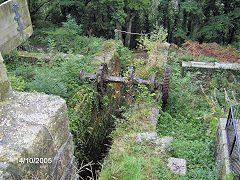
Carmears incline waterwheel
|
The Lower Tramway and Trevanney Dry - SX 0660 5625
The lower tramway, built in 1868, served the Dry and then the Rock Mill Quarry and Orchard Quarry of the 'South Cornwall Granite Co'. Traffic to the Dry finished in 1960 and the quarries closed in 1928.
Trevanney Dry was built in 1920 by the Central Cornwall China Clay Co. It was taken over by ECLP Ltd in 1935 and connected to their pipeline network and closed in 1965.
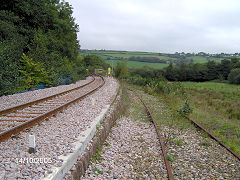
Ponts Mill Junction
|
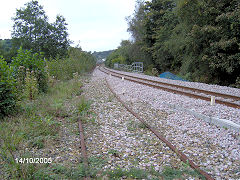
Ponts Mill Junction
|
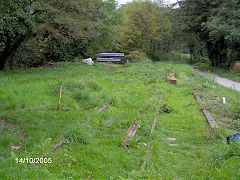
Ponts Mill branch at clay works
|
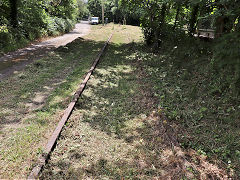
The lower tramway at Ponts Mill
|
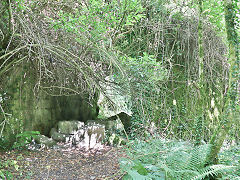
The lower tramway at Ponts Mill
|
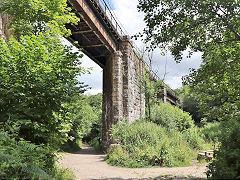
Rock Mill Viaduct, Trevanney
|
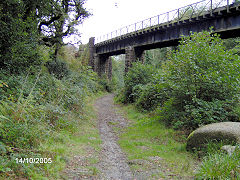
Rock Mill Viaduct, Trevanney
|
|
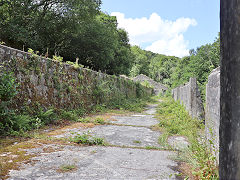
Trevanney Dry
|
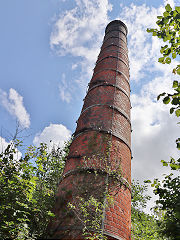
Trevanney Dry
|
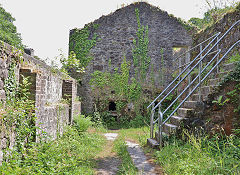
Trevanney Dry
|
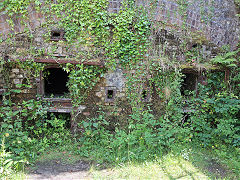
Trevanney Dry
|
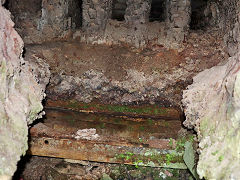
Trevanney Dry
|
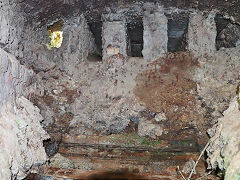
Trevanney Dry
|
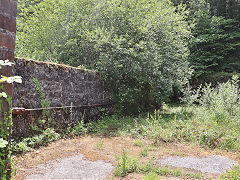
Trevanney Dry
|
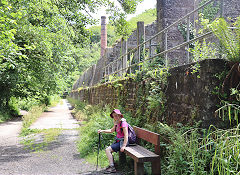
Trevanney Dry
|

Trevanney Dry
|
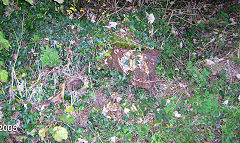
Unknown ironmongery at Trevanny
|
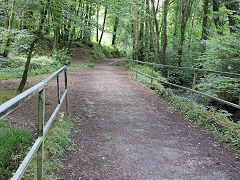
The lower tramway
|
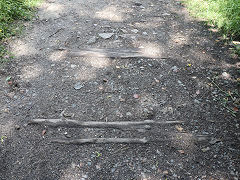
The lower tramway
|
Fowey and Polruan SX126513
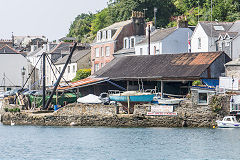
Fowey boatyard
|
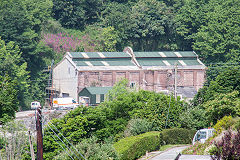
Carne Point building, Fowey
|
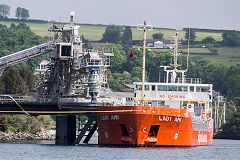
'Lady Ami' at Carne Point, Fowey
|

'Lady Ami' at Carne Point, Fowey
|
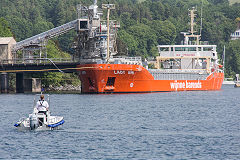
'Lady Ami' at Carne Point, Fowey
|
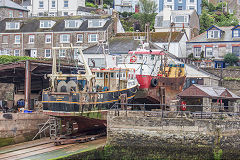
'Guardian' at Polruan shipyard
|
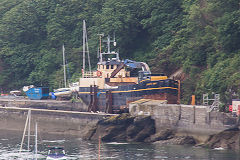
'Lantic Bay' at Polruan shipyard
|
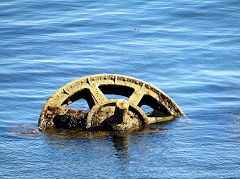
'Kantoeng' tin dredger
|
Pont Quay - SX 1433 5185
Pont Quay (or Pont Pill) at the end of Pont Creek has two well-preserved limekilns, recorded here in 1814, the limestone coming from Plymouth. The tariff board is dated 1894 and there are two warehouses to hold the 'imports and exports' that crossed the River Fowey, roadstone, bricks, coal, manure and flour going in and grain and logs going out. There is also a corn mill, sawmill, a beer house and blacksmith shop around the quay. Pont Creek is believed to have inspired 'Wind in the Willows' by Kenneth Graham.
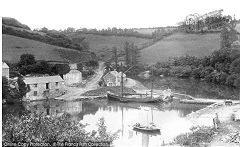
Pont Quay in 1893
|
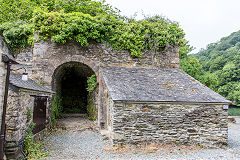
Pont Quay Southern limekiln
|
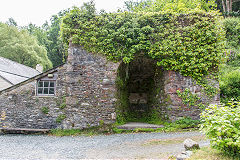
Pont Quay Southern limekiln
|
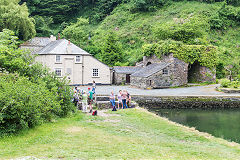
Pont Quay Southern limekiln
|
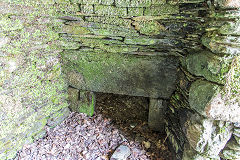
Pont Quay Southern limekiln draw-hole
|
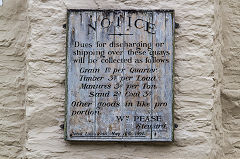
Pont Quay Tariff Board, 1894
|
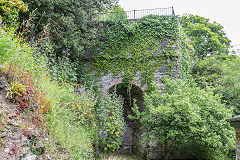
Pont Quay Northern limekiln
|
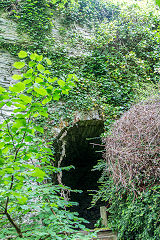
Pont Quay Northern limekiln
|
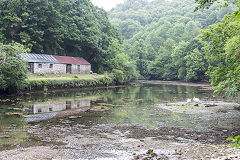
Pont Quay warehouses
|
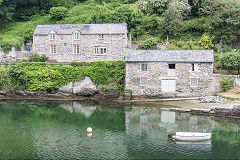
Pont Quay warehouses
|
|
|
Caerhays, Gorran - SW 9724 4130
Below Caerhays Castle, on the seawall of Porthluney Bay, is this pillbox. Another one is hidden in the undergrowth near the castle.
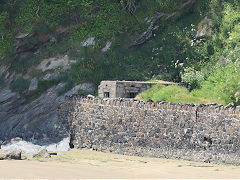
Caerhays Castle pillbox
|
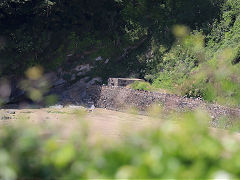
Caerhays Castle pillbox
|
|
Redruth
Moseley Heritage Museum, Redruth - SW 6853 4283
Moseley Heritage Museum, West Tolgus, Redruth, has an amazing collection of old model railways, Meccano sets and Cornish mining locomotives. If you ask nicely, they may let you drive one.
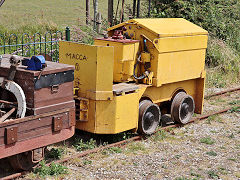
Moseley Museum '1 Macca'
|
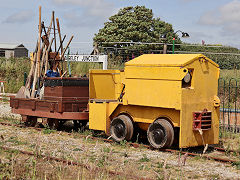
Moseley Museum '1 Macca'
|

Moseley Museum '2 Smelter'
|
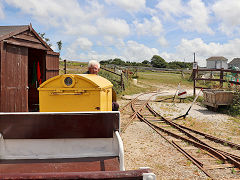
Moseley Museum '3'
|
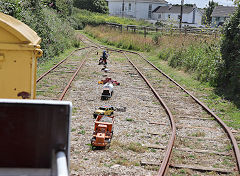
Moseley Museum '3'
|
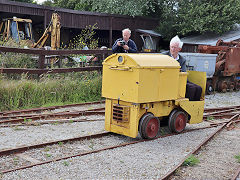
Moseley Museum '3'
|
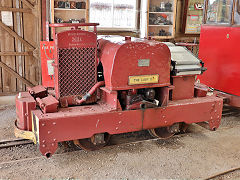
Moseley Museum '3 The Lady D'
|
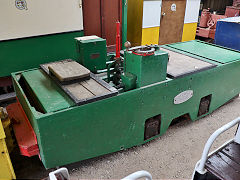
Moseley Museum '4 (Bincleaves)'
|
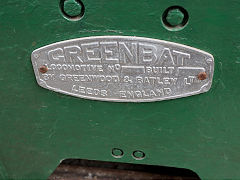
Moseley Museum '4 (Bincleaves)'
|
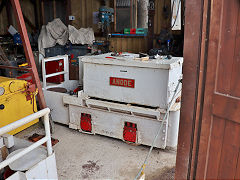
Moseley Museum '5 Anode'
|
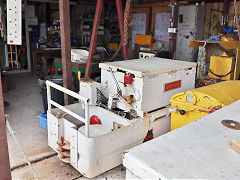
Moseley Museum '6 Cathode'
|
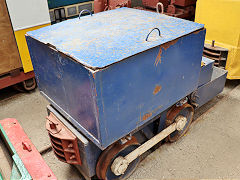
Moseley Museum '8 (Little George)'
|
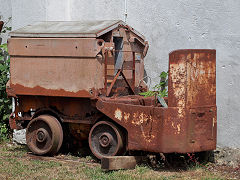
Moseley Museum '9'
|
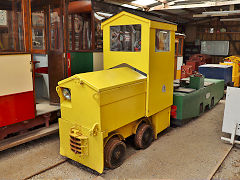
Moseley Museum '11'
|
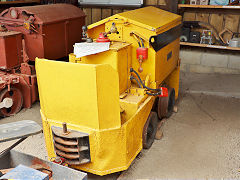
Moseley Museum '13 Lewis'
|
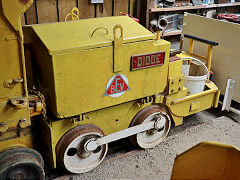
Moseley Museum '20 Diode'
|
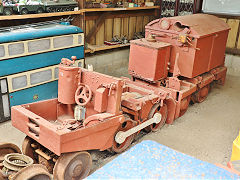
Moseley Museum '72' and '64'
|
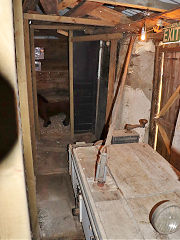
Moseley Museum OHE loco
|
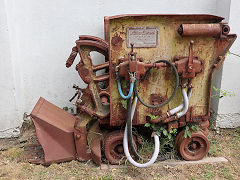
Moseley Museum 'Atlas' shovel
|
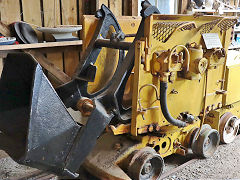
Moseley Museum overhead shovel
|

Moseley Museum loco battery box
|
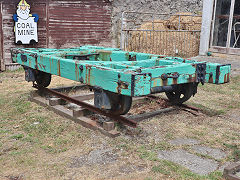
Moseley Museum wooden frame
|

Moseley Museum 'mine' exhibition
|
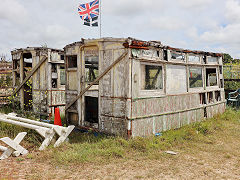
Moseley Museum tramcar trailer bodies
|
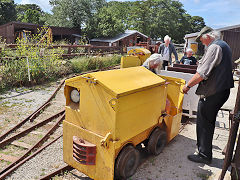
Moseley Museum driver training
|
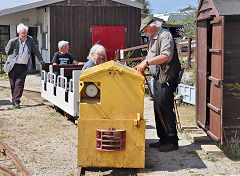
Moseley Museum driver training
|
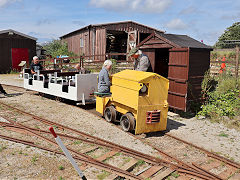
Moseley Museum driver training
|
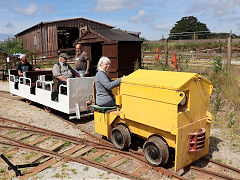
Moseley Museum driver training
|
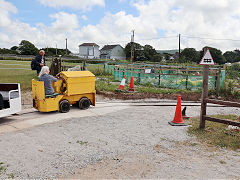
Moseley Museum driver training
|
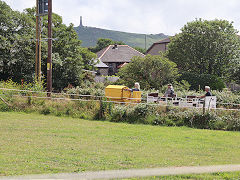
Moseley Museum driver training
|

Moseley Museum driver training
|
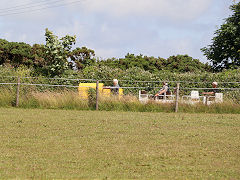
Moseley Museum driver training
|
Around Redruth Town
Wheal Raven, Redruth - SW 6803 4255
Wheal Raven has three chimneys, the stepped chimney served a boiler house down in the valley. The other two are arsenic calciner flues. Wheal Raven worked in the 1830s and later became part of South and West Wheal Tolgus. Wheal Tehidy worked from 1834-1842 and 1851-1861 leaving its chimney for posterity and the chimneys of Wheal Uny stand out on the skyline. The valley was re-worked by 'The Cornish Tailings Co' between 1912 and 1918.
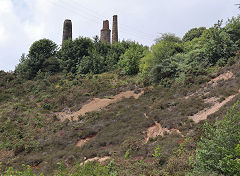
Wheal Raven, Tolgus Valley
|
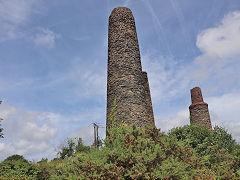
Wheal Raven, Tolgus Valley
|
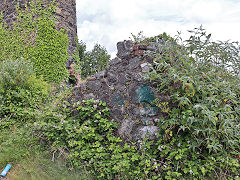
Wheal Raven, Tolgus Valley
|
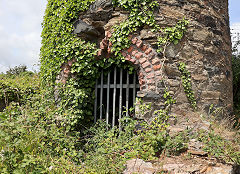
Wheal Raven, Tolgus Valley
|
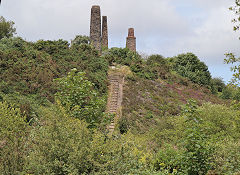
Wheal Raven, Tolgus Valley
|
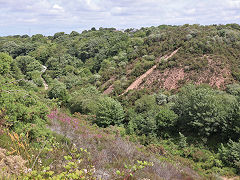
Wheal Raven, Tolgus Valley
|

Wheal Tehidy chimney
|

Wheal Uny on the skyline
|
South Tincroft, Redruth - SW 6690 4470
South Tincroft mine was built c1860 to drain the main North Tincroft mine, on the other side of the railway line which has totally disappeared. Starting in 1680 as a copper mine, by 1870 Tincroft was a rich tin mine. It acquired Cook's Kitchen mine in 1895 and closed in 1921. The man engine whim was Dunkin's Shaft and was used as a man engine from 1874 to 1891. The air compressor house dates from the 1890s and drove the rock drills underground.
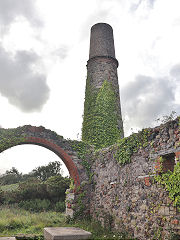
South Tincroft compressor house
|
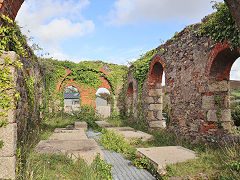
South Tincroft compressor house
|

South Tincroft compressor house
|
|
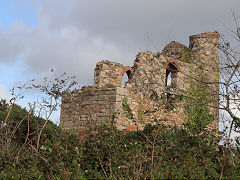
South Tincroft man engine
|
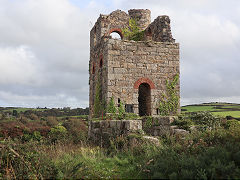
South Tincroft man engine
|
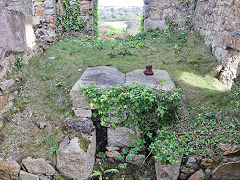
South Tincroft man engine
|

South Tincroft man engine
|
Cook's Kitchen and new South Crofty Mine, Redruth - SW 664407
Old Cook's Kitchen dates from the early 1700s and was in use until 1913, being about 2500 ft deep by then. The two engine houses are on Chapples Shaft The pumping engine was a 50", later 55" and the winding engine 26", both dating from c1860. They are now both behind the security fence of the new South Crofty Mine.
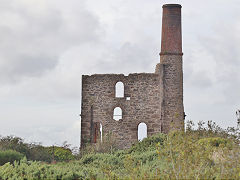
Cook's Kitchen winding engine
|
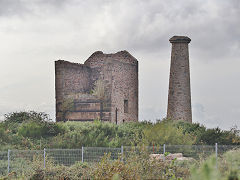
Cook's Kitchen pumping engine
|
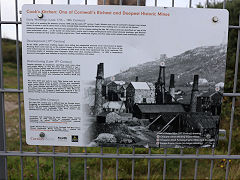
Cook's Kitchen notice
|
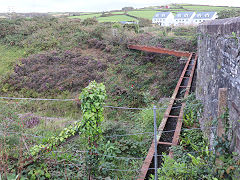
Cook's Kitchen leat
|
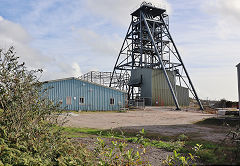
New South Crofty Mine
|
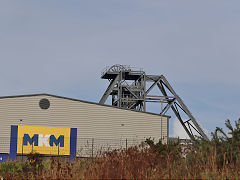
New South Crofty Mine
|
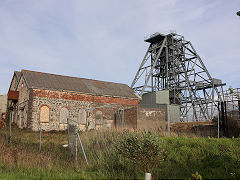
New South Crofty Mine
|
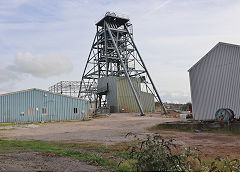
New South Crofty Mine
|
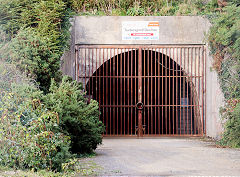
Tuckingmill Decline
|

The tunnels under the railway
|
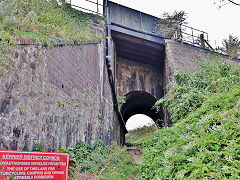
The tunnels under the railway
|
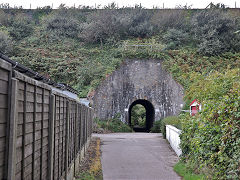
The tunnels under the railway
|
South Crofty Mine, Redruth - SW 668412
South Crofty Mine is one of the oldest mines in Cornwall with history going back to 1670 as South Wheal Crofty. It was one of the last working mines in Cornwall, shutting down in 1998, to become a visitor centre. Robinson's engine house contains an 80" pumping engine built in 1854 in Hayle and erected here in 1903.

Robinson's engine house
|

Robinson's engine house
|
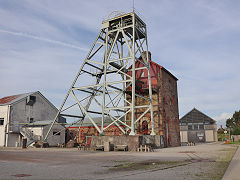
Robinson's engine house
|
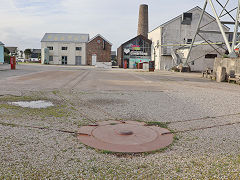
Robinson's engine house
|
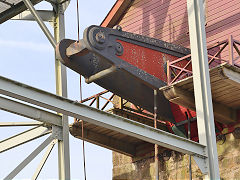
Robinson's beam engine
|
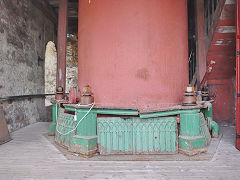
Robinson's beam engine
|
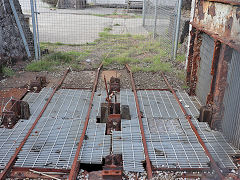
Robinson's shaft
|
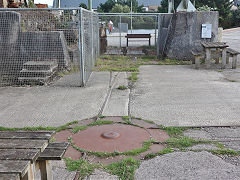
Robinson's shaft
|
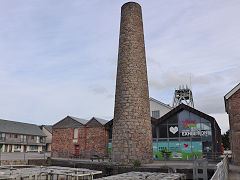
Robinson's boiler house
|

Water filtration
|
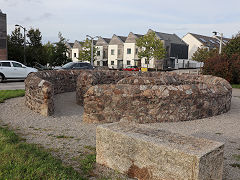
Powder magazine
|

Powder magazine notice
|
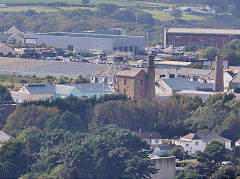
South Crofty Mine
|
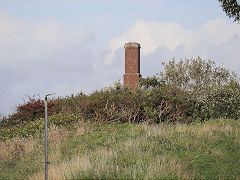
Another chimney near South Crofty
|
|
|
East Pool and Ager Ltd (EPAL) Mine, Redruth - SW 673417
East Pool and Ager Mine has two sites, Taylors pumping engine and Mitchells winding engine. Taylors pumping engine is a 90" engine of 1892 but installed here in 1924. The engine worked until 1954 when electric pumps were installed. Mitchells 30" whim engine dates from 1887.
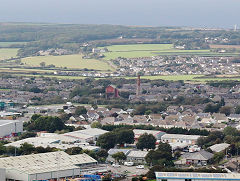
Taylors pumping engine
|
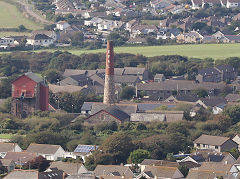
Taylors pumping engine
|
|
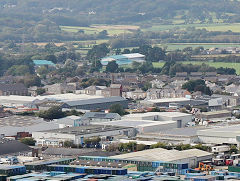
Mitchells winding engine
|

Mitchells winding engine
|
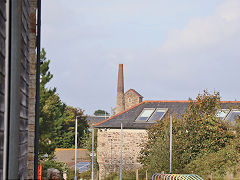
Mitchells winding engine
|
Wheal Francis and Wheal Basset
A very large complex of mines, stamps and smelters to the South of Redruth. They were all linked by their own tramways and inclines and also connected to the Redruth and Chasewater Railway at Lanner.

Wheal Francis and Wheal Basset
|
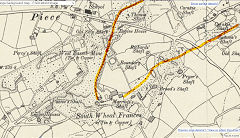
South Wheal Francis, c1905
|
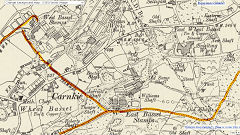
Wheal Basset, c1905
|
South Wheal Francis - SW 6805 3935
The large copper and tin mine of South Wheal Francis,

South Wheal Francis boiler house
|
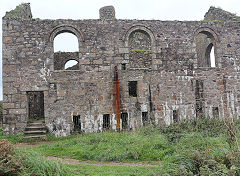
South Wheal Francis compressor house
|
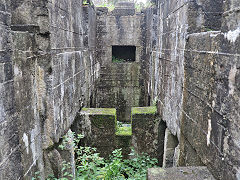
South Wheal Francis compressor house
|
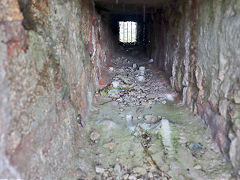
South Wheal Francis compressor house
|
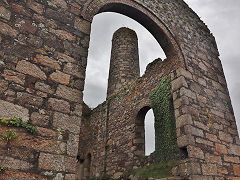
South Wheal Francis engine house
|
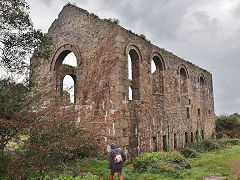
South Wheal Francis engine house
|
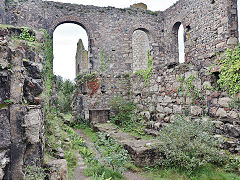
South Wheal Francis engine house
|
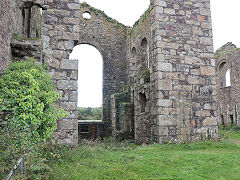
South Wheal Francis engine house
|
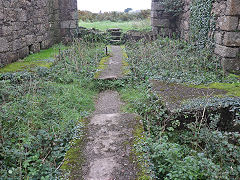
South Wheal Francis engine house
|
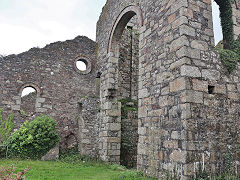
South Wheal Francis engine house
|
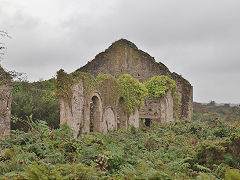
South Wheal Francis miners dries
|
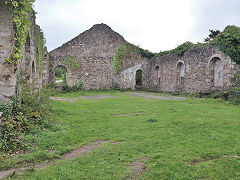
South Wheal Francis miners dries
|
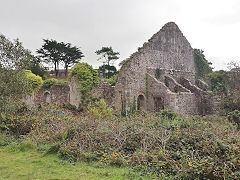
South Wheal Francis miners dries
|

South Wheal Francis ore bin
|
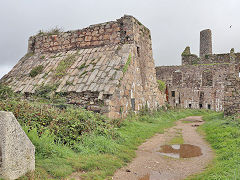
South Wheal Francis ore bin
|
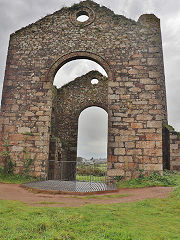
South Wheal Francis pumping house
|
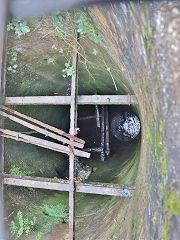
South Wheal Francis Marriotts Shaft
|
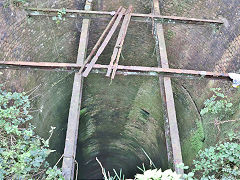
South Wheal Francis Marriotts Shaft
|
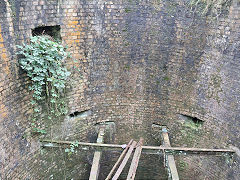
South Wheal Francis Marriotts Shaft
|
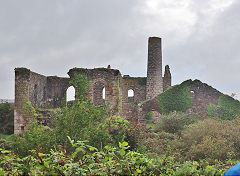
South Wheal Francis winding house
|
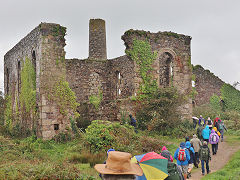
South Wheal Francis winding house
|
|

Aerial view of South Wheal Francis
|

South Wheal Francis c1900
|
Daubuz and Pascoes Shafts - SW 6745 3905 and SW 6780 3935
Daubuz Shaft was the home of a 30" dual purpose winding and pumping engine from 1880, closing in 1918.
Pascoes Shaft had a 30" whim, built in 1879, and an 80" pumping engine, from 1887, closing with the complex in 1918. The pumping engine house has unusually narrow windows.
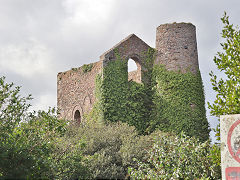
Daubuz engine house
|
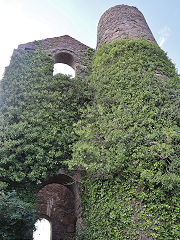
Daubuz engine house
|

Daubuz engine house
|
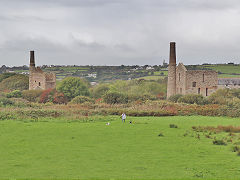
Pascoes whim and pumping houses
|
The Basset Tramway
The Basset Tramway linked South Wheal Francis and other mines to the Basset stamps and the 'Redruth & Chacewater Railway'. It is now an excellent walking track linking many of the sites in the area. Between 1896 and 1919 it used a 1'8" gauge Orenstein & Koppel steam loco named 'Kimberley'.
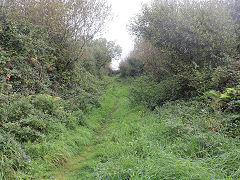
The Basset Tramway
|
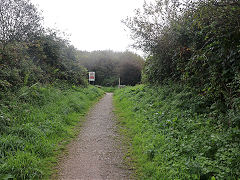
The Basset Tramway
|
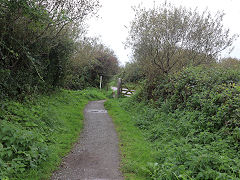
The Basset Tramway
|
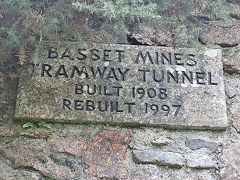
The Basset Tramway
|
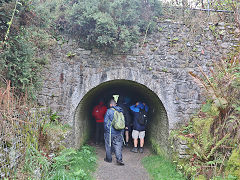
The Basset Tramway
|
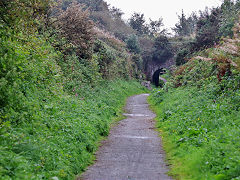
The Basset Tramway
|
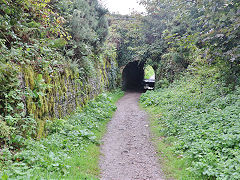
The Basset Tramway
|
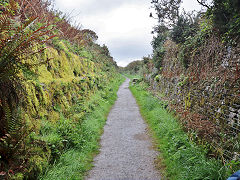
The Basset Tramway
|
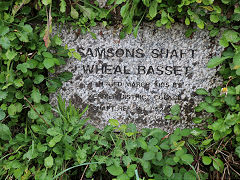
Samson's Shaft
|
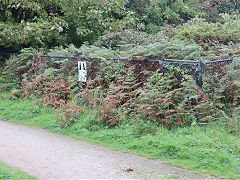
Samson's Shaft
|
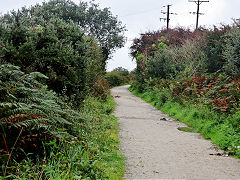
The Basset Tramway
|
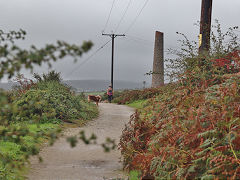
The Basset Tramway
|
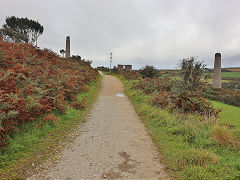
The tramway to the R&CR
|
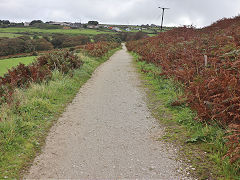
The tramway to the R&CR
|
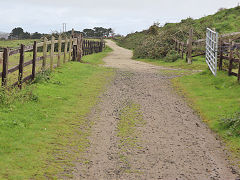
The tramway to the R&CR
|
|
The Basset Stamps and Mines
A very large complex of mines, stamps and smelters to the South of Redruth. They were all linked by their own tramways and inclines and also connected to the Redruth and Chasewater Railway at Lanner.
East Basset Stamps - SW 6911 3985
Wheal Basset comprises of Wheal Basset mine, Wheal Basset stamps, West Wheal Basset stamps and, further away, West Wheal Basset mine.

East Basset stamps
|
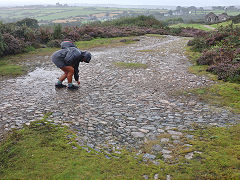
East Basset stamps
|
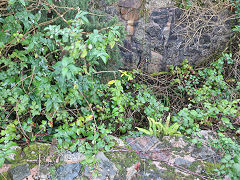
East Basset stamps
|
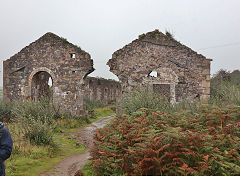
East Basset stamps
|

East Basset stamps
|
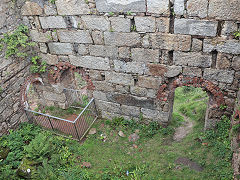
East Basset stamps
|
Lyles Shaft and Carnkie Vilage - SW 6911 3985
Lyles Shaft was part of North Wheal Basset until it closed in 1872 when it was used for pumping from Wheal Basset
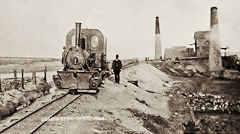
'Kimberley' 'OK' 040WT
|
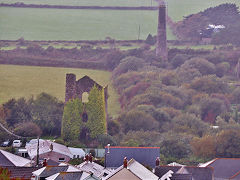
Lyles Shaft, Carnkie
|
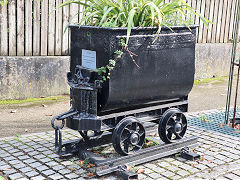
Carnkie Village wagon
|
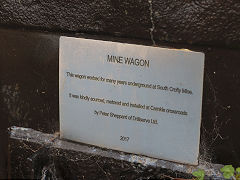
Carnkie Village wagon
|
West Basset Stamps - SW 6880 4020
Wheal Basset comprises of Wheal Basset mine, Wheal Basset stamps, West Wheal Basset stamps and, further away, West Wheal Basset mine.
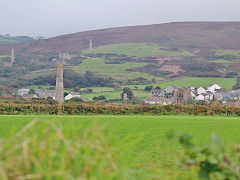
West Basset stamps
|
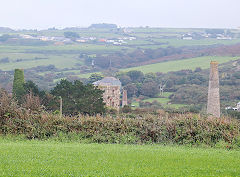
West Basset stamps
|
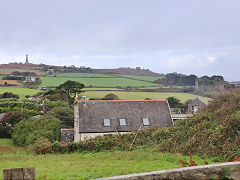
West Basset stamps
|
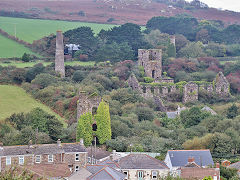
West Basset stamps
|
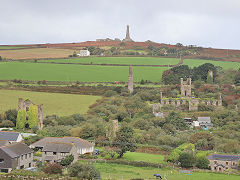
West Basset stamps
|
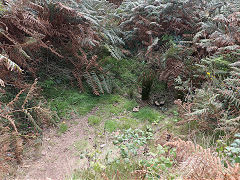
West Basset stamps
|
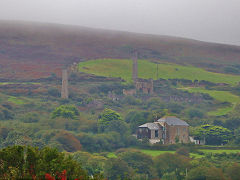
West Basset stamps
|
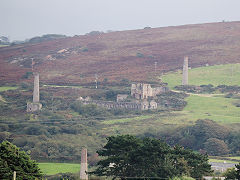
West Basset stamps
|
West Wheal Basset, Thomas's Shaft - SW 6815 3970
Thomas's Shaft has a date stone of 'AD 1854' and was unusual as it had the chimney inside the engine house which housed a 60" pumping engine. It was the eastern pumping shaft of West Wheal Basset.
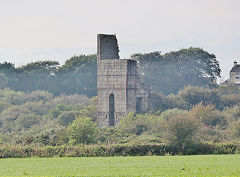
Thomas's Shaft. West Wheal Basset
|
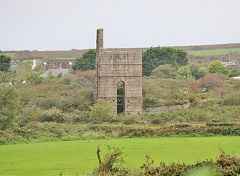
Thomas's Shaft. West Wheal Basset
|
|
East Wheal Basset, Seleggan Smelting Works - SW 6950 4015
The Cornish Tin Smelting Co opened the Seleggan Smelting Works in 1887. It was connected to the Redruth & Chasewater Railway by a branch from the yard at Buller Downs. It was the last smelting works in Cornwall by 1923 but it, too, closed in 1931.

Seleggan Smelting Works
|
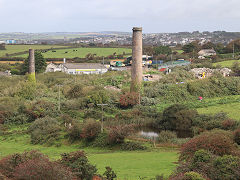
Seleggan Smelting Works
|
|
The Tresavean Branch
The Tresavean Branch of the Hayle Railway ran from Redruth to mines at Tresavean.
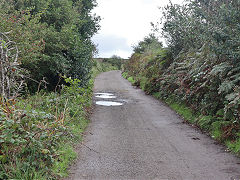
The R&CR from Wheal Buller
|
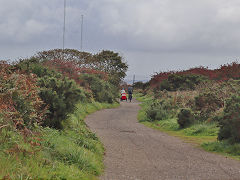
The R&CR from Wheal Buller
|
|
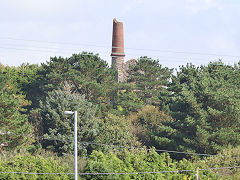
Penance Consols Mine
|
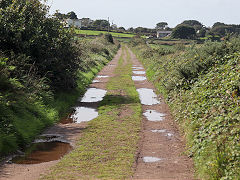
Towards the incline and Redruth
|
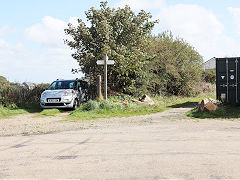
Tresavean and R&CR level crossing
|
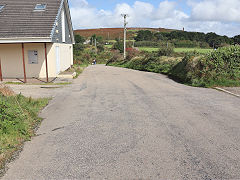
Level crossing at the Lanner Centre
|
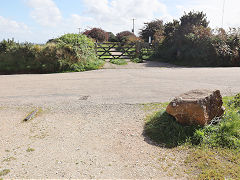
From the Lanner Centre
|

Along the Tresavean Line
|
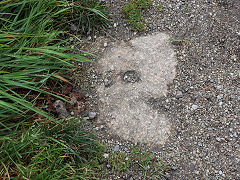
Along the Tresavean Line
|
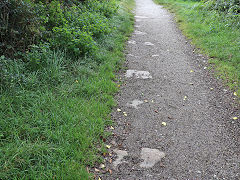
Along the Tresavean Line
|

Along the Tresavean Line
|
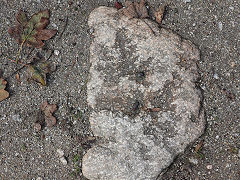
Along the Tresavean Line
|
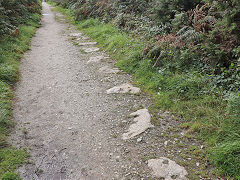
Along the Tresavean Line
|
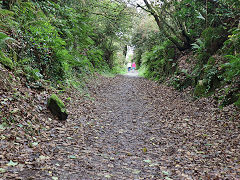
Along the Tresavean Line
|
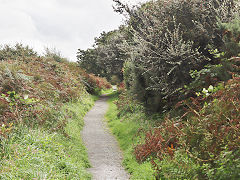
Along the Tresavean Line
|
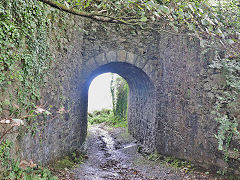
Bridge under the line
|
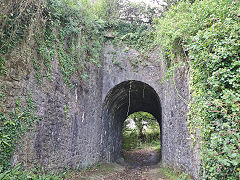
Bridge under the line
|
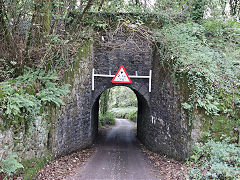
Rough Street Bridge
|
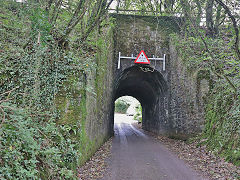
Rough Street Bridge
|
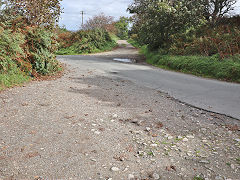
Chapel Hill level crossing
|
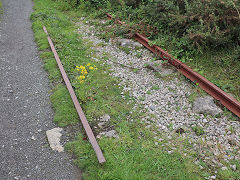
Preserved track
|
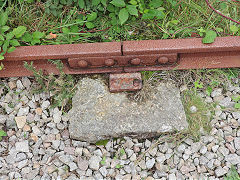
Preserved track
|
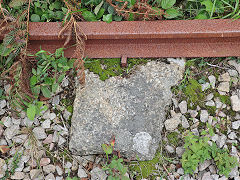
Preserved track
|
Wheal Uny
The two engine houses of Wheal Uny are prominent on their hilltop. The pumping engine house, built in 1869 contained a 70" engine and the winding engine house, dated 1880, had a 26" engine. Hind's shaft, 1465 ft deep, was used for both pumping and winding and the mine closed in 1893. The small chimney was for the boiler house.
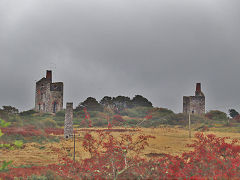
Wheal Uny engine houses
|
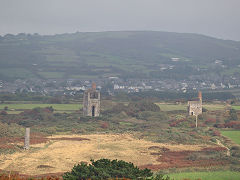
Wheal Uny engine houses
|
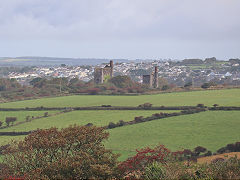
Wheal Uny engine houses
|
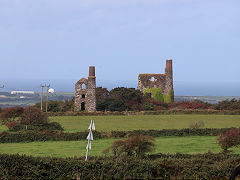
Wheal Uny engine houses
|
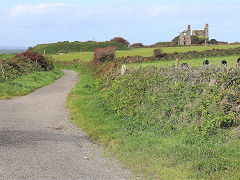
Wheal Uny engine houses
|
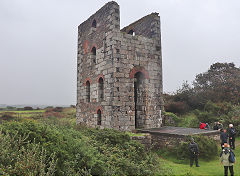
Wheal Uny pumping house
|
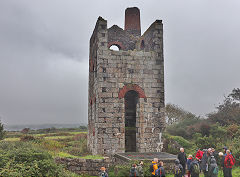
Wheal Uny pumping house
|
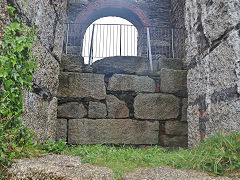
Wheal Uny pumping house
|
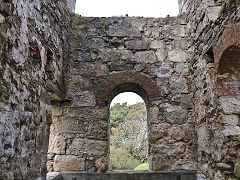
Wheal Uny pumping house
|
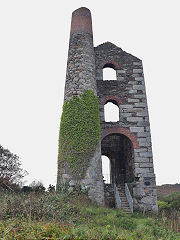
Wheal Uny pumping house
|
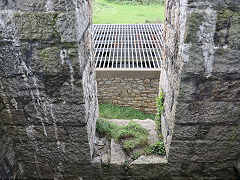
Wheal Uny pumping house
|

Wheal Uny pumping house
|
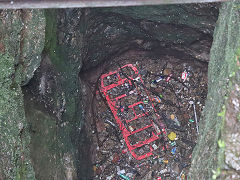
The 1465 ft deep Hind's Shaft
|
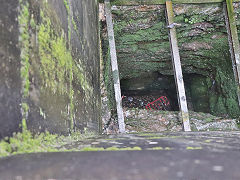
The 1465 ft deep Hind's Shaft
|
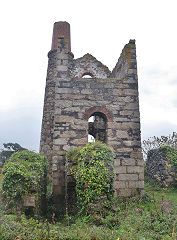
Wheal Uny winding house
|

Wheal Uny winding house
|
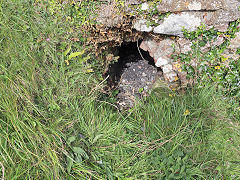
Wheal Uny winding house
|
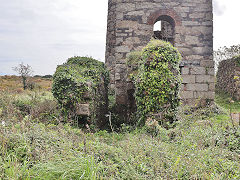
Wheal Uny winding house
|
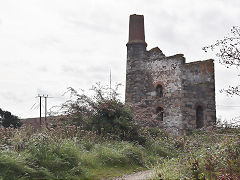
Wheal Uny winding house
|
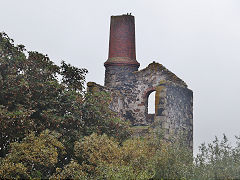
Wheal Uny winding house
|
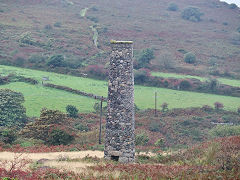
The boiler house chimney
|
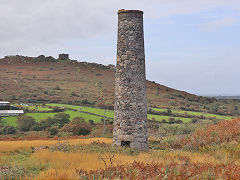
The boiler house chimney
|
|
|
